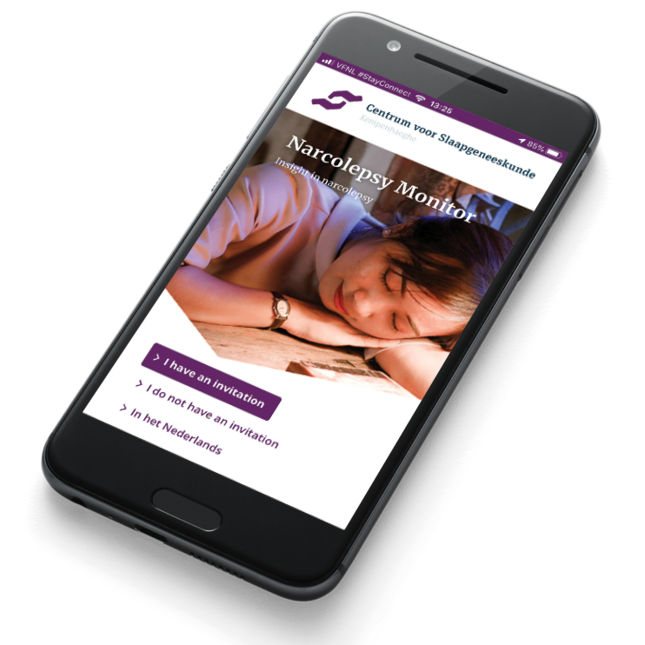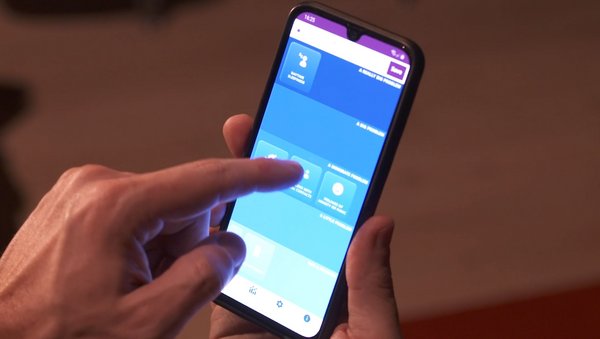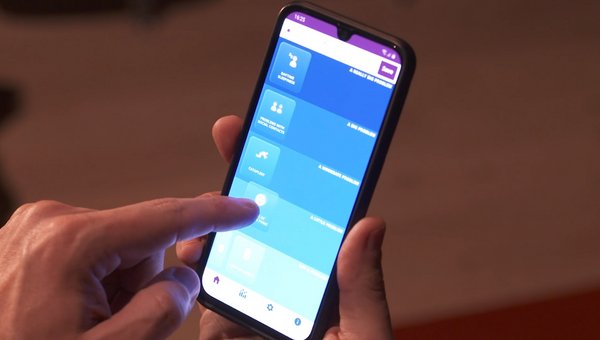Narcolepsy, a neurological sleep disorder with excessive daytime sleepiness and cataplexy as core symptoms, can disturb one’s life considerably. The Narcolepsy Monitor, a joint development under the e/MTIC umbrella, offers patients, medical practitioners and researchers more insight into the disorder. As a result, treatment and support can be better aligned, offering more grip on the narcolepsy.

Monitoring narcolepsy symptoms with accessible app
In the Netherlands, some 1,500 people have been diagnosed with narcolepsy. Many more suffer from this neurological sleep disorder characterized by overwhelming daytime drowsiness, sudden attacks of sleep and cataplexy. Because of the limited number of patients, gathering data on the disorder is hard. Yet, data is essential to acquire in-depth knowledge and to improve the treatment. For this reason, the Center for Sleep Medicine Kempenhaeghe, in cooperation with the University of Technology Eindhoven and other partners, developed the Narcolepsy Monitor. This easily accessible app will help both patients and researchers gain a better insight into the symptoms of their disorder.
PhD student and mental health psychologist Drs. Laury Quaedackers was involved in the development of the Narcolepsy Monitor. “Narcolepsy is characterized by a broad spectrum of symptoms. They range from excessive daytime sleepiness and cataplexy (a sudden loss of muscle tone, often triggered by emotions) to sleep paralysis, fragmented sleep and hallucinations.” In the past years, it became clear that non-sleep-related symptoms, such as obesity, fatigue and psychiatric symptoms also play a role, even though the causal relationship is not always clear.

Subjective experience
Symptoms may vary from person to person and day to day. Sometimes they are subtle and are not experienced as being disruptive. In traditional sleep research, patients are asked to fill out questionnaires regarding their symptoms and the frequency with which they occur. “The Narcolepsy Monitor aims to measure the patient’s subjective experience with a broad spectrum of symptoms over a longer period”, according to Laury. “It can help us improve the personal treatment of specific patients.”

Joining forces
Prof. dr. Sebastiaan Overeem (Center for Sleep Medicine Kempenhaeghe and TU/e Biomedical Diagnostics Group) and prof. Panos Markopoulos (TU/e) played a crucial role in the project; the TU/e design department was involved in the initial design. Under the e/MTIC umbrella, students and clinicians joined forces to realize a pilot version of the app. Initial feedback was incorporated in the version of the Narcolepsy Monitor that is currently available free of charge in the App store and Google Play.
Studies
Two studies are ongoing. The first study encompasses the Center for Sleep Medicine Kempenhaeghe comparing the app data from its patients with the data from the traditional questionnaires in order to validate the app. The second study aims to gather big data from users worldwide. App users are asked to give permission to make their anonymized data available to researchers. Students under the supervision of prof. Anna Vilanova (TU/e Visualization Group Department of Mathematics and Computer Science) are developing models for Kempenhaeghe researchers to analyze.
Kempenhaeghe recently initiated a media campaign to accompany the launch of the app.
Writers: Leonie Vink and Mirjam Brennand - Center for Sleep Medicine Kempenhaeghe